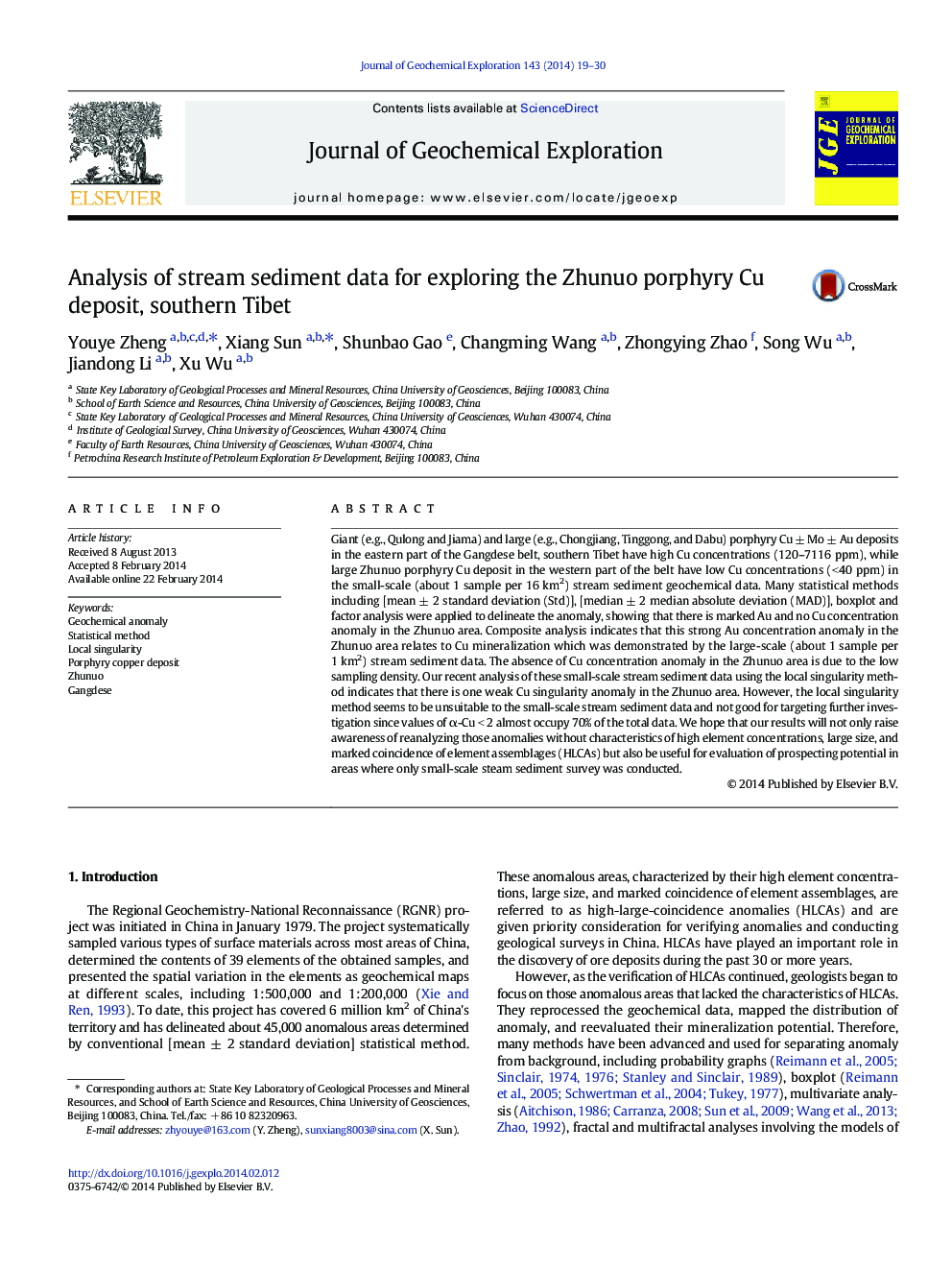| Article ID | Journal | Published Year | Pages | File Type |
|---|---|---|---|---|
| 4457348 | Journal of Geochemical Exploration | 2014 | 12 Pages |
Giant (e.g., Qulong and Jiama) and large (e.g., Chongjiang, Tinggong, and Dabu) porphyry Cu ± Mo ± Au deposits in the eastern part of the Gangdese belt, southern Tibet have high Cu concentrations (120–7116 ppm), while large Zhunuo porphyry Cu deposit in the western part of the belt have low Cu concentrations (< 40 ppm) in the small-scale (about 1 sample per 16 km2) stream sediment geochemical data. Many statistical methods including [mean ± 2 standard deviation (Std)], [median ± 2 median absolute deviation (MAD)], boxplot and factor analysis were applied to delineate the anomaly, showing that there is marked Au and no Cu concentration anomaly in the Zhunuo area. Composite analysis indicates that this strong Au concentration anomaly in the Zhunuo area relates to Cu mineralization which was demonstrated by the large-scale (about 1 sample per 1 km2) stream sediment data. The absence of Cu concentration anomaly in the Zhunuo area is due to the low sampling density. Our recent analysis of these small-scale stream sediment data using the local singularity method indicates that there is one weak Cu singularity anomaly in the Zhunuo area. However, the local singularity method seems to be unsuitable to the small-scale stream sediment data and not good for targeting further investigation since values of α-Cu < 2 almost occupy 70% of the total data. We hope that our results will not only raise awareness of reanalyzing those anomalies without characteristics of high element concentrations, large size, and marked coincidence of element assemblages (HLCAs) but also be useful for evaluation of prospecting potential in areas where only small-scale steam sediment survey was conducted.
